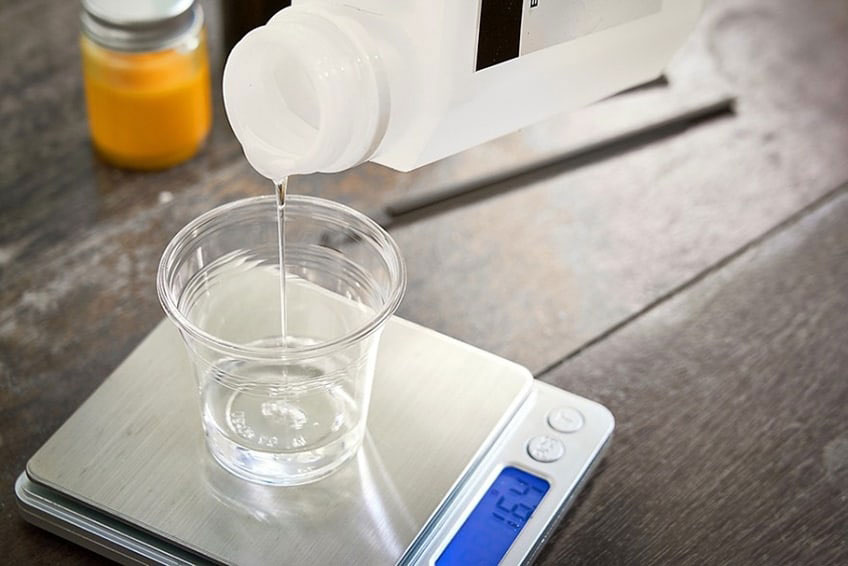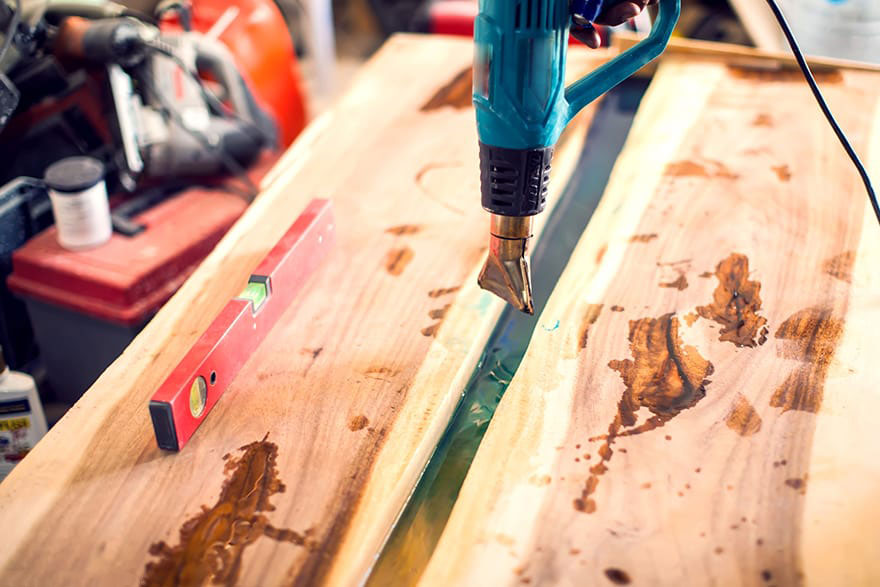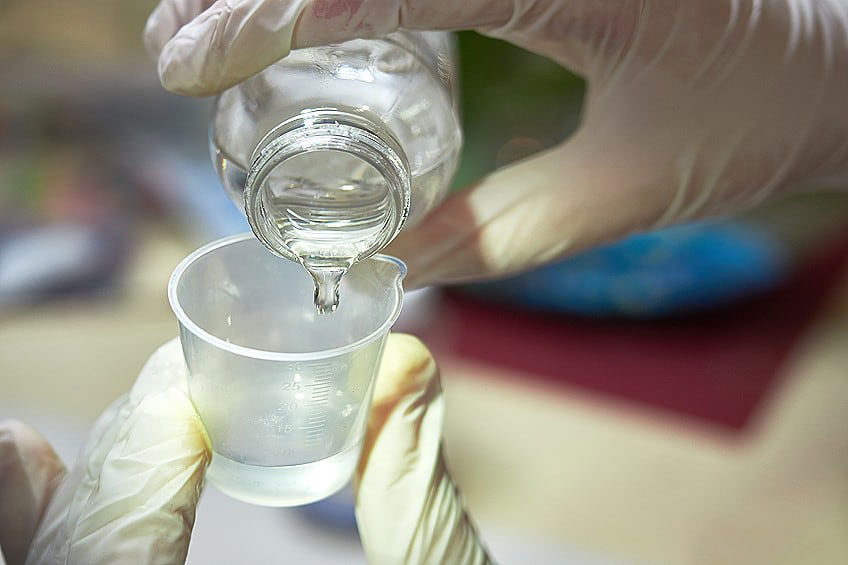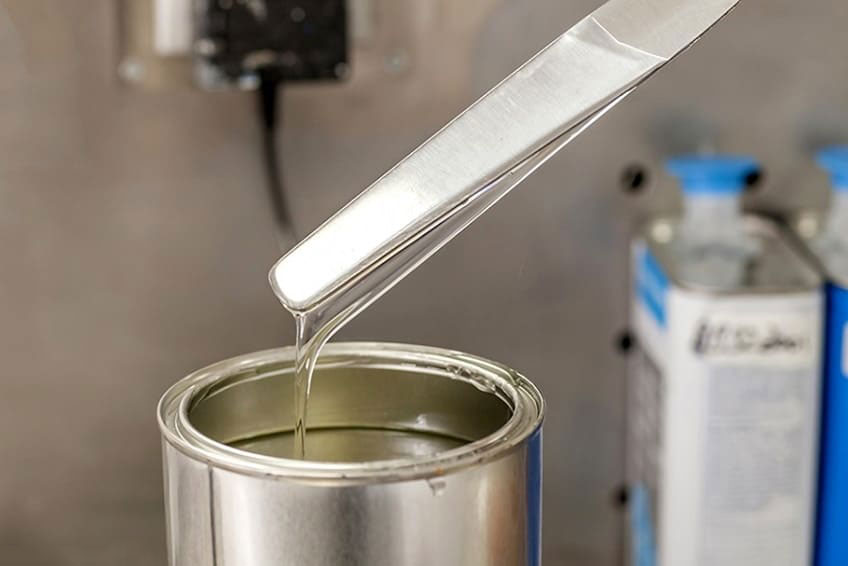Epoxy resin is a durable material used for many applications such as an adhesive, a sealant and also used in many creative projects. Unfortunately, there is one obstacle and that is its high viscosity. This means that it can be difficult to apply and it will not easily flow into those hard to reach places and corners. This can result in pockets of air forming and causes the epoxy resin to cure incorrectly. So, the one way to fix this problem is by thinning the epoxy. In this article, we will be guiding you through the process of how to thin epoxy resin correctly.
What is meant by Thinning Epoxy Resin?
To thin Epoxy Resin simply means that you lower the viscosity. This will allow the epoxy to flow much easier, especially with things like partly rotten wood, helping it to penetrate the porous surface. Thinning epoxy also makes it much easier to brush or roll onto your surface, and fiberglass material is more easily saturated.

To thin epoxy resin you can apply two basic methods:
- Heat the epoxy resin
- Add some solvent to the epoxy resin
Either of these two methods will have the same result, thinning the epoxy resin and reducing its viscosity. In this article, we will be guiding you through the process of thinning epoxy and of what to expect and look out for during the process.
Remember, there are some methods that you can use to thin epoxy resin which may lower its viscosity, but it will also have the effect of weakening its protective characteristics.
Method #1: Thinning Epoxy Resin Using Heat
This method for thinning epoxy is the best option, as it will not weaken the material in any way. You can compare this method with the heating of store-bought canned frosting, which is quite thick. However, just pop it into the microwave for a couple of seconds and the viscosity becomes low enough to be able to pour it. You can use this process for the epoxy resin.
Take a big enough container and fill it with boiling water, then take the epoxy resin container and immerse it in the hot water. Leave it to stand in the hot water for a couple of minutes. This will allow the heat from the hot water, together with the thermal conductivity of the metal epoxy resin container, to lower the viscosity of the epoxy resin and make it pourable. Now, you need to work fast, as the epoxy resin will start to thicken as soon as it begins to cool down. Thinning your epoxy resin in this way will create a problem, as the warm epoxy starts to cure a lot faster than during the normal process. So, you need to plan and have things ready when needed. It also helps if you can use a slower hardening epoxy, which will allow you more time to work with it.

At what temperature do you need to heat your epoxy resin? The epoxy resin itself, as well as the container, should be handled without burning yourself. We suggest a maximum temperature of around 115° F. if you heat it too much, it will cause the epoxy to harden even quicker leaving you little time to work with it. Also, too rapid curing of the epoxy will result in overheating. So, if you notice smoke coming up from the curing epoxy, it has been overheated and will have to be replaced.
However, if you are working with wood and you need to thin your epoxy using the heat method, the best way is to heat the wood and leave the epoxy resin at room temperature. You can then mix your resin and hardener and apply the mixture to the heated wood. As soon as the epoxy touches the warm wood, it will begin to thin. The warm wood begins to cool down and the epoxy will be drawn into the wood and start to thicken. This technique allows you more time to work with your epoxy, as it becomes thinner and it also takes a long time for your wood to cool down.
Method #2: Thinning Epoxy Resin Using a Solvent
Using a solvent to thin your epoxy is a much easier and quicker method, but it will drastically affect the compressive strength of the epoxy, so we do not recommend this method. However, if you still go ahead with this, here are some of the solvents we suggest you use. Solvents like denatured alcohol, lacquer thinners and acetone.

All of these solvents are easily available and also do a great job in lowering the viscosity. Also, these solvents evaporate quickly and are unlikely to become trapped in your cured epoxy resin.
Here are some of the consequences of using solvents as epoxy thinners:
- Using a solvent to thin your epoxy will extend the curing time
- Acetone for thinning epoxy can cause a change to the color of the cured epoxy
- Solvents can drastically reduce its compressive strength
- The solvents can pose a fire hazard
- Thinning your epoxy with solvents can cause your epoxy to crack or shrink over a long time
Denatured Alcohol for Thinning Epoxy Resin
What is Denatured Alcohol? This is Ethanol that has been rendered poisonous but is still a lot safer to use than acetone or lacquer thinners. This solvent allows you to thin your epoxy without causing too much damage to the durable properties of your epoxy. How much do you use? An acceptable mixing ratio is 15 to 20% of the volume, which means that you take 30 fluid ounces of epoxy and mix it with 2 fluid ounces of solvent.

Acetone or Lacquer Thinners for Thinning your Epoxy Resin
These two solvents have very few differences and as such are interchangeable for use as an epoxy thinner. Take care when using these solvents, as they can drastically weaken the compressive strength of the epoxy and can also destroy the epoxy if mixed incorrectly.
How to mix it for your epoxy? The acceptable mix is a ratio of 10:1, which means if you have 10 gallons of epoxy you need to mix it with 1 gallon of lacquer thinners or acetone.
Conclusion
After all this explanation concerning thinning epoxy, does it make sense to go ahead with it? In some cases the process might be essential, but in many other cases, no. The bottom line is if you need to thin your epoxy for any reason, use the heating method and not the solvent method.
Make sure that when your epoxy cures it does not overheat, then all the physical properties of your epoxy will remain constant. However, if you use the solvent method, which is much easier and quicker, you run the risk of drastically reducing your cured epoxies moisture resistance and strength.

